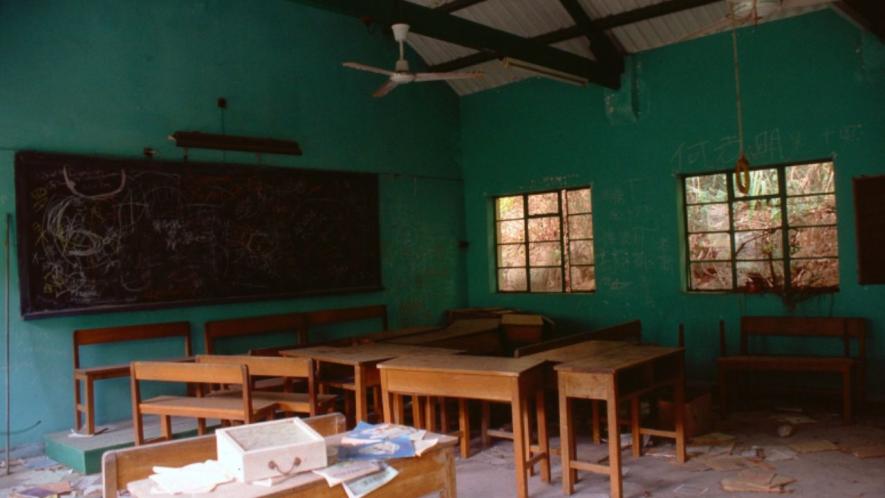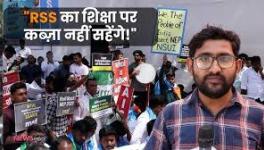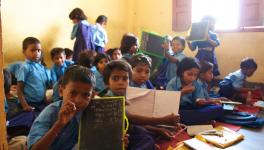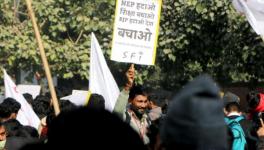Merger of Schools in UP: Quiet Dismantling of Public Education

Image Courtesy: PxHere
The Uttar Pradesh government has unleashed an assault on public education with the closure of 5,000 government schools. Through a Government Order dated 16.05.25, the state government has decided for the merger of 5,000 primary/upper primary schools where there is inadequate student enrolment.
This order will not only set into motion a systematic dismantling of the public schooling system but also lead to a deepening crisis in access to education and equity. This merger is nothing but closure of schools where hundreds of students from marginalised backgrounds go to begin their elementary education. For them, their schools are the only chance to break the shackles of poverty and exclusion, and attain equality and a life of dignity.
The Government Order is a blow to Article 21-A of the Indian Constitution that guarantees the fundamental right to free and compulsory education for all children aged 6 to 14. It was introduced by the 86th Constitutional Amendment in 2002. It is the basis of the Right of Children to Free and Compulsory Education Act, 2009, hereinafter referred as RTE Act. The Uttar Pradesh Government enacted the U.P. Right of Children to Free and Compulsory Education Rules, 2011 hereafter referred as Rules 2011.
The logic of the state government behind closure of schools is inadequate enrollment in school. As per Section 3 of the Act, 2009, every child of the age of six to 14 years, shall have a right to free and compulsory education in a neighbourhood school till completion of his or her elementary education. Areas of limits of neighbourhood are defined in Section 6 of the Act and Section 4 of the Rules as –
in respect of children in Classes I-V, a school shall be established in habitation which has no school within a distance of 1.0 km. and has population of at least 300;
…in respect of children in Classes VI-VIII, a school shall be established in habitation which has no school within a distance of 3.0 km. and has a population of at least 800.
Moreover, there is no minimum roll strength prescribed for a primary school neither under the Act and nor under the Rules. Therefore, the Government Order, making roll strength as a basis of closure of schools, is contrary to the law.
The matter was taken to the court seeking a direction of quashing the government order dated 16.06.25. In the case of Krisna Kumari through her natural guardian Smt Reena and 50 others versus State of U.P thru. Addl. Chief Secy. Deptt of Basic Edu. Lko and 3 others, bearing writ no. 6290 of 2025, the single bench of J. Pankaj Bhatia dismissed the petition saying it lacks merit.
The court was posed with the three poignant questions-
1. Is the Government order violative of Art 21, RTE Act and Rules, 2011?
2. Is the decision of the state arbitrary?
3. Can the impugned order be struck down as it is not the law in the eye of Art 13 of the Indian Constitution?
While deciding the judgement, court has evaded the question of it being violative of fundamental right under Article 21A, RTE Act and Rules, 2011 and took refuge under the National Education Policy (NEP), 2020 for allowing the merger/closure of schools. The judge has cited judgements in favour of the policy upholding that court should not transgress into the field of the policy decision and policy decision can be interfered through a judicial review only if it’s unconstitutional.
Clearly, neither the NEP nor the Government Order can supersede the fundamental right of the children enshrined under Article 21A of the Indian Constitution. It is established law that fundamental rights cannot be amended except in accordance with the law and not certainly through the Government Order.
The court, while addressing the question whether the impugned order can be struck down as it is not law under Article 13, in the judgement reads, “Order impugned, is a Government Order or not will not be of much importance as the said order is in furtherance to the National Education Policy, 2020.” This question was evaded again under the guise of NEP.
The court lauded the NEP 2020, but notably failed to reference its key recommendations. While invoking the NEP to justify certain actions, it overlooked the fact that the same policy strongly advocates for education spending to reach 6% of GDP.
In reality, the budget allocation tells a very different story. For the year 2024-25, the Department of School Education and Literacy received just 1.51% of the total budget, while Higher Education was allocated 0.98%. Combined, the total expenditure on education stands at 2.49% of the budget. This translates to a mere 0.36% of the GDP. Still, the court justifies the closure of schools in the name of optimisation of resources, especially when bare minimum is not being allocated for the same.
The writ was against the closure/merger of the schools but the rationale of the judgement relies upon the fact and finds it absurd that “throughout the State of Uttar Pradesh from rural areas to semi urban areas and to urban areas where there are limitations of availability of the land and other resources; in fact the approximate population of the State is 24 crore and if the arguments of petitioner are to be accepted that for every 300 inhabitants one school should be available at a distance of 1 km, the State will have to provide for about 8 lakh schools.”
The issue is not about opening new schools, but rather the closure/merger of existing ones. The important issue is: Has a new school been established within a 1 km radius, or has the village population declined to fewer than 300 people? Only under these specific conditions would it be legal to close a school under the law.
As long as even one child is enrolled, the school cannot be closed. If the number of students is currently low, what guarantee is there that new students will not enrol in the future? In any case, increasing enrollment, reducing dropout rates, and ensuring student attendance are primary responsibilities of the State. The onus lies on the State to explain why enrolment in government schools is abysmally low.
The court has also emphasised that Section 4(3) of the RTE Act provides for transportation for children living in remote or distant areas. How many such children, especially in forest areas or remote villages, are actually being provided transportation?
The state government's perspective is reflected in the argument presented by the standing counsel. According to their submission, the government order should be appreciated for aiming to "optimize human resources" in order to provide better facilities. It was also argued that since the definition of a school under the RTE Act includes private schools, children’s rights are not being violated. However, the government’s true intention seems to be that it is creating space for private entities to expand while withdrawing from its constitutional responsibility. If the intention had been genuine, the government would have invested in improving facilities in existing schools instead of shutting them down.
UDISE+ (Unified District Information System for Education Plus) data reveals a troubling trend, a steady decline in the number of government and government-aided schools, alongside consistent growth in private schools over the past decade. In 2014–15, there were 11,07,118 government schools compared with 2,88,164 private schools. By 2023–24, the number of government schools had fallen to 10,17,660, while private schools had increased to 3,32,108. This means that 89,458 government schools have shut down, while 42,944 new private schools have opened up during this period.
This decision will adversely affect the lives of thousands of children. The burden will fall heaviest on children from marginalised communities—particularly girls. In a state like Uttar Pradesh, where the female literacy rate is just 57.18%, such a move poses a serious threat to their right to education. There is ample evidence to show that girls are likely to drop out when schools are farther away.
The closure/merger of schools is not just a mere Government Order, it will have lasting consequences. If this Order is not reversed, it will deepen systemic inequalities and undo decades of progress in universalising elementary education. It is imperative that the government reconsider its move, not just through the lens of cost and efficiency, but through the lens of equity and justice.
The writer is a Lucknow based lawyer and currently works with ActionAid Association. The views are personal.
Get the latest reports & analysis with people's perspective on Protests, movements & deep analytical videos, discussions of the current affairs in your Telegram app. Subscribe to NewsClick's Telegram channel & get Real-Time updates on stories, as they get published on our website.
























